Single ring? Double ‘n’ bash? Triple? Here’s an easy to digest explanation of your options.
Is it chainset or crankset? Is there a difference? Well, technically there is. A chainset includes chainrings. A crankset is just the crank arms. Some riders and even some shops often think the terms interchangeable. They shouldn’t. Read the full product description if you’re unsure though.
These days, most of the time when we’re talking about chainsets we’re talking about a pair of crank arms, some chainrings and a bottom bracket. All in one package. It’s what most people expect to buy.
Pretty much all modern chainsets have a hollow axle that is attached to one of the crank arms. This axle passes through some bearing cups (either internally mounted cups or externally mounted ones). This buyers guide is exclusively about this type of chainset.
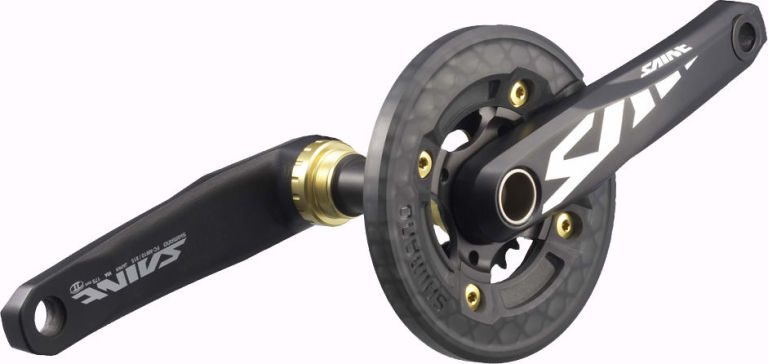
Before you get into the finer details you will need to know the basics of the type of chainset you are looking for.
What speed is it?
9 speed, 10 speed or 11 speed? Just like cassettes, chainsets come with chainrings that only really like to work with chains of the same speed.
Will it fit your bike?
The first thing to check is your bike frame. Find out what bottom bracket type is accepts. Your frame will either have a normal threaded bottom bracket shell or it will be a Pressfit bottom bracket shell. Pressfit shells are rarer but they are becoming more and more used on new mountain bikes.
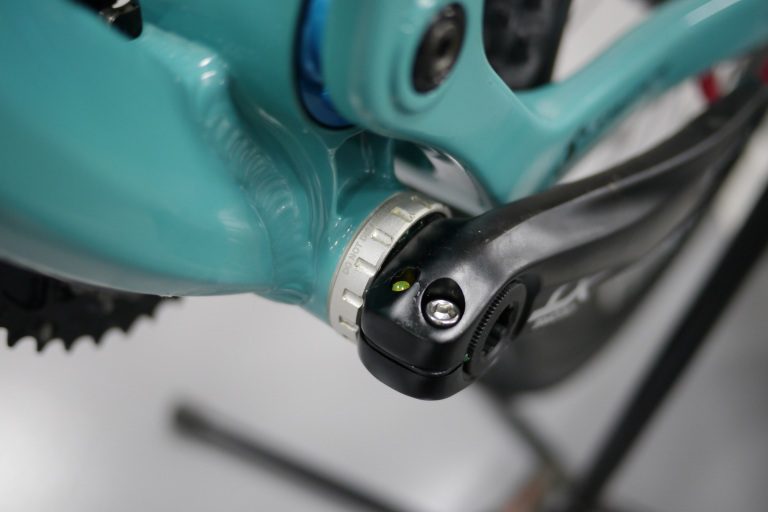
Normal threaded bottom brackets sit outside of the frame’s bottom bracket shell (see pic above). Pressfit bottom brackets sit inside the frame’s bottom bracket shell.
What length are the crank arms?
Chainsets can come in different arm lengths. The most common arm length is 175mm. The length of the arms are printed on the back of the arms near the pedal axle hole.
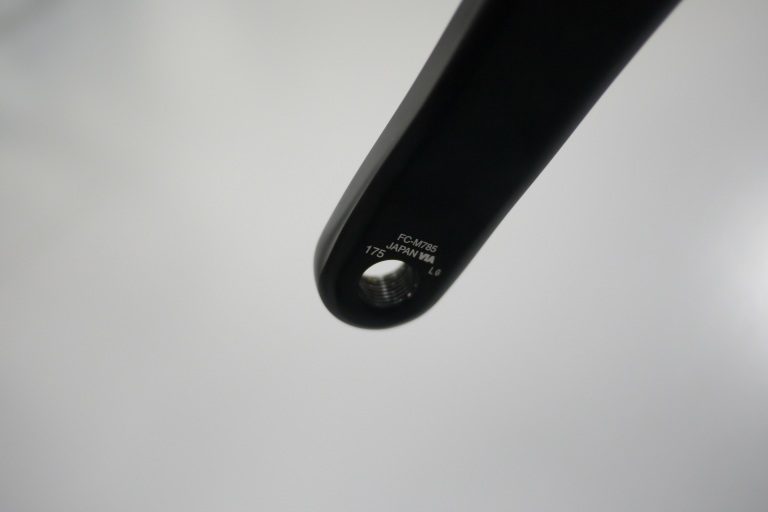
You don’t have to stick to your current crank arm length – your bike will work with any crank arm lengths. If you’re short, you can try shorter cranks, say 170mm. If you’re lanky then you can try longer ones, like 180mm.
You can also try shorter cranks if you want to improve your pedals’ ground clearance (some Downhill riders run shorter cranks for example).
How many chainrings do you want?
Single, double or triple? This choice can be something of a minefield with lots of folk offering up their contrasting opinions. Truth be told there is some sort of advantage to every option.
Single
The current trend is for single chainring setups but this may not suit you. The idea of single chainring setups is to simplify your drivetrain. Make it more reliable – especially if the chainring is a thick-thin chain-clinging type and/or combined with a chain retention device. Single ring setups are lighter and neater too.
Obviously just having one chainring does reduce your gearing range but with modern cassettes now ranging up to 36T – or more with conversion kits such on the Hope 40T-Rex – a lot of riders consider this range sufficient.
If you’re just starting out or you ride for several hours in steep terrain you may find life a bit too hard with a single ring setup.
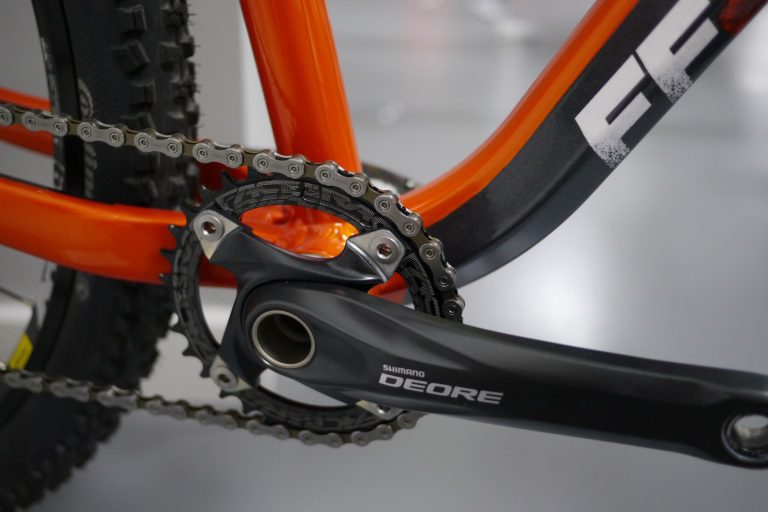
If you’re having issues with losing your chain frequently on rough terrain then you should contemplate a single ring setup. You’ll just have to put up with the restricted gear range on climbs and appreciate the chain retaining reliability on the descents.
What chainring size to go for? This can vary depending on the intended terrain and even your bike’s wheel size. A 32T chainring on a 29er is slightly harder to pedal than the same 32T chainring on a 26″ wheel bike., for example.
Broadly speaking, if you ride a 29er and/or ride in steep mountains go for a chainring with 32T or fewer (the 11 speed Sram XX system goes down to 28T if your bike has the XX drivetrain). If you ride 26″ or 27.5″ wheels and/or ride in less mountainous terrain then go for a 34T or possibly even 36T chainring.
Triple
Triple chainring setups are an increasing rarity on mountain bikes, even on XC bikes. But if your riding involves a large amount of faster-rolling surfaces (tarmac, fireroad) then you may like to have the large outer chainring of a triple chainset.
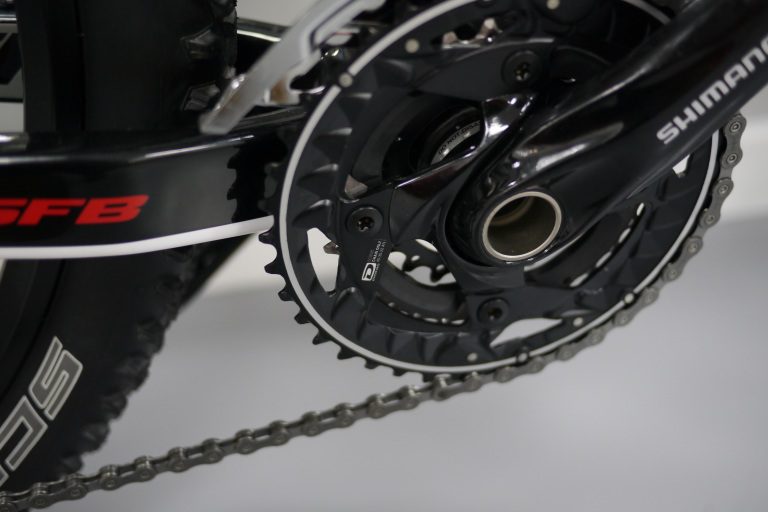
Triple ring setups can be a bit a noisy and slappy/skippy due to the long length of chain required. And newer riders may find it distracting to have to think about which chainring to be in more often.
If you’re browsing for a triple chainset, a good ratio of chainrings is 22-32-42T.
Double
Double chainring setups arguably suit the vast majority of mountain bikers. They have small (‘granny’) rings for steep climbs – or for modest climbs at the end of really long rides! The larger chainring is the one you’ll use most: on flat bits, on all downhills and on most climbs.
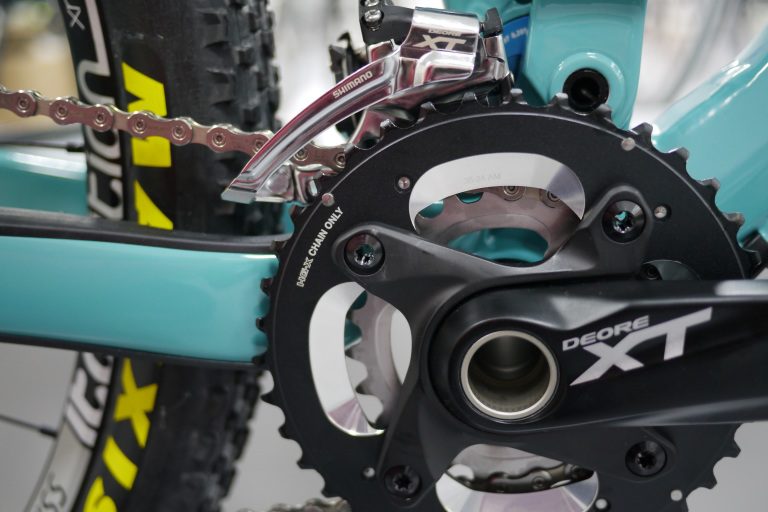
Double chainrings don’t offer as much chain-retaining reliability as single ring setups. You can get chain retention devices for them but they can be a bit draggy and clunky. Double chainring setups are more noisy and slappy/skippy too.
It’s worth pointing out that triple chainsets can be relatively easily turned into double chainring or even single chainring setups. And double chainsets can be turned into single ring setups.
So make sure you have a look at those sort of chainsets even if you’re after a slightly different final setup. You may find some bargain triple chainsets that can be converted to single or double setups for example.
BCD WTF?
Or Bolt Circle Diameter. BCD is the spacing of chainring holes.
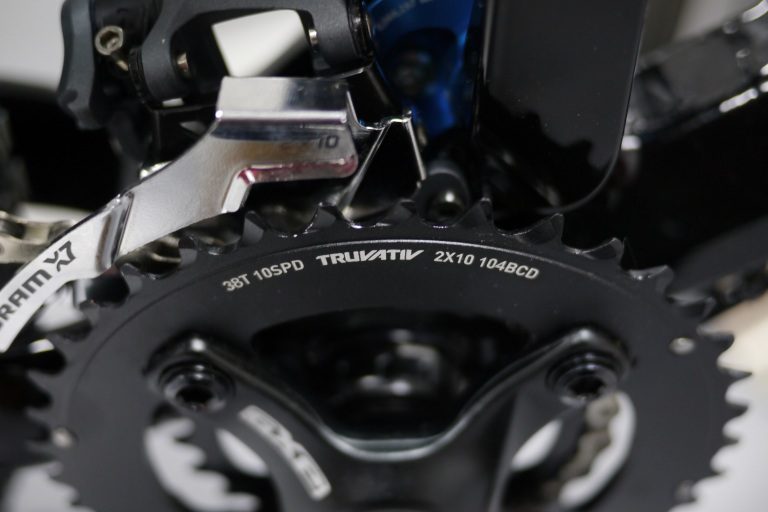
BCD is not relevant – until you start to look for replacement chainrings. Chainrings come in different BCDs. As well as the basic ‘4 hole or 5 hole?’ there are variants within both of these ie not all 4-hole rings will fit all 4-hole cranks.
BCD is not something that you should factor in that much when you’re shopping around for a chainset. Unless you have a massive array of existing chainrings that you wish to still be able to use (which isn’t very likely now is it?).
Just make sure you’re buying a chainset that has a BCD that you can still get chainrings for.
BB axle type?
The vast majority of modern chainsets use a hollow axle that is attached to one of the crank arms (usually the driveside crank arm). Although they all look extremely similar, they aren’t all interchangeable with each other.
There is plenty of anecdotal evidence that you can combine certain brands and the results are fine. I’ve know folk who have used RaceFace cranks in Shimano bottom brackets and it’s been fine. I’ve tried to mix FSA and Shimano and the result has been a bit too tight more my liking.
Shimano, RaceFace and FSA are all 24mm diameter axles but it seems it’s not quite as consistent as that implies.
You definitely can’t mix and match Shimano and Truvativ/Sram stuff – sorry! Truvativ/Sram is 22m diameter at the end of the axle spindle.
If in doubt, just stick with the same brand.
Why are some chainsets expensive?
The lighter a chainset is the more it will cost to produce. The stiffer a chainset is the more it will cost to produce. Chainsets that are stiffer AND lighter will cost a lot more to produce. Chainsets that are made from carbon will cost more than those made from aluminium.
Having said that, since the move to hollow axle designs pretty much all hollow axle chainsets are very stiff. So essentially you’re going to be paying more purely for a lighter weight chainset.
Not there’s anything wrong with that – weight saving is a worthy goal for all bikes – just don’t expect to feel a noticeable difference in performance between a cheaper chainset and an expensive one.
Even the shifting performance of cheaper chainrings isn’t appreciably inferior to expensive chainrings. In fact, a lot of riders prefer cheaper chainrings as they sometimes last longer than expensive (lighter) rings with no real disadvantage other than weighing a bit more.
Which chainset should you buy?
XC riders are still better suited to a multiple chainring setup. Single rings don’t offer enough gearing range or cadence options for dealing with every single type of gradient and surface that XC riders and racers will encounter. Triple chainsets are still well worth a look at. A lightweight crank arm pairing with durable chainrings will do the job nicely.
Trail riders shouldn’t be so eager to abandon their granny rings. Double chainring chainsets are great for most people. Lots of range. Acceptable levels of chain slap. Canny shoppers can look for a cut-price triple ring chainset and replace the outer chainring with a bash guard.
Enduro and gravity riders will be served well by a single ring setup. Make sure you get a thick-thin chainring. Go for a few rides before seeing whether you need to bolster it with an additional chain retention device (some riders don’t feel the need for one, others do). Enduro riders who ride longer distances in larger hills should consider getting a large range-expanding sprocket for their cassette.

good info. I’m doing a group set overhaul on my 93 M2000 CnDale. you have answered some questions I have. Most important is 3 ring to 2, I’m keeping it as close to OEM as I can. Thanks again.
Brilliant info on all technical aspects of everything!!!